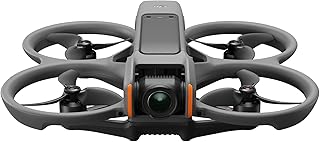DJI Drone Videography Techniques: Master the Art of Aerial Filmmaking
Introduction:
DJI drones have revolutionized filmmaking, offering breathtaking aerial perspectives and unparalleled creative possibilities. Mastering DJI drone videography techniques elevates your footage from simple recordings to cinematic masterpieces. This guide will explore essential techniques, tips, and tricks to elevate your drone videography game.
I. Pre-flight Preparation:
1. Know Your Drone: Familiarize yourself with your drone's features, controls, and limitations. Understand battery life, flight time, and wind resistance.
2. Plan Your Shoot: Scout the location, analyze the terrain, and visualize your shots. Utilize flight planning apps like Litchi or DJI Fly to create detailed flight plans.
3. Check Legal Regulations: Familiarize yourself with local drone regulations and obtain necessary permits before flying. Always fly responsibly and maintain awareness of your surroundings.
4. Gather Necessary Equipment: Besides your drone, pack essential equipment like:
* Spare Batteries: Ensure enough batteries for your shoot duration.
* SD Cards: Use high-quality, large-capacity SD cards for high-resolution footage.
* Filters: Neutral Density (ND) filters control light exposure and create cinematic effects.
* Gimbal Stabilizer: Use a dedicated gimbal stabilizer for smoother shots, especially in windy conditions.
* Headphones: Use headphones for monitoring audio and identifying potential problems.
II. Aerial Cinematography Techniques:
1. The "Golden Rule": Apply the "rule of thirds" principle to create visually balanced and engaging compositions. Divide the screen into thirds, both horizontally and vertically, and place key elements along these lines or at their intersections.
2. Camera Movement: Use smooth, deliberate camera movements to create a sense of flow and excitement. Experiment with:
* Tracking Shots: Follow a moving subject smoothly.
* Orbiting Shots: Circle around a subject to reveal its surroundings.
* Panning Shots: Sweep the camera across a scene, capturing a wide panorama.
* Tilting Shots: Angle the camera up or down, creating a sense of depth.
* Zooming Shots: Use zoom to emphasize a subject or create dramatic tension.
3. Shot Composition: Pay attention to the following elements for stunning visual storytelling:
* Leading Lines: Use natural lines in the landscape to draw the viewer's eye towards the subject.
* Depth of Field: Use aperture settings to create a shallow depth of field, blurring the background and focusing on the subject.
* Framing: Use natural elements like trees, buildings, or rocks to frame your subject, adding context and visual interest.
* Negative Space: Leave empty space around the subject to create a sense of serenity and balance.
4. Drone Flight Modes: Utilize DJI drone flight modes to achieve specific shots:
* ActiveTrack: Follow a moving subject autonomously.
* Point of Interest: Circle around a point of interest automatically.
* Waypoint: Create a pre-programmed flight path for complex shots.
* TapFly: Tap the screen to direct the drone to a specific location.
5. Filmmaking Techniques:
* Visual Storytelling: Use camera movement and shot composition to tell a story and evoke emotions.
* Transitions: Employ smooth transitions between shots, like fades, wipes, or cross-dissolves, for a seamless flow.
* Sound Design: Use a mix of drone sound, natural sound, and music to enhance the visual experience.
* Color Grading: Adjust the color balance and contrast of your footage for a specific look and feel.
III. Post-Production Enhancements:
1. Editing Software: Use professional editing software like Adobe Premiere Pro or Final Cut Pro to enhance your drone footage.
2. Color Correction: Adjust color balance, contrast, and saturation for a more professional look.
3. Stabilization: Smooth out any shaky footage and improve stability for a more cinematic feel.
4. Sound Design: Add background music, sound effects, and voiceovers to create a captivating experience.
5. Visual Effects: Use visual effects to enhance your footage, such as slow motion, timelapses, or special effects.
IV. Conclusion:
Mastering DJI drone videography techniques requires practice, experimentation, and a keen eye for detail. By combining these techniques with creativity, passion, and a strong storytelling approach, you can create stunning aerial footage that captures the beauty and grandeur of the world from a unique perspective.


